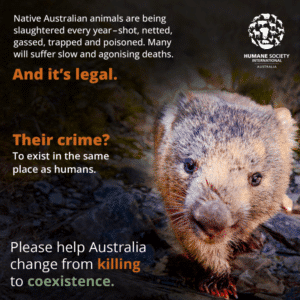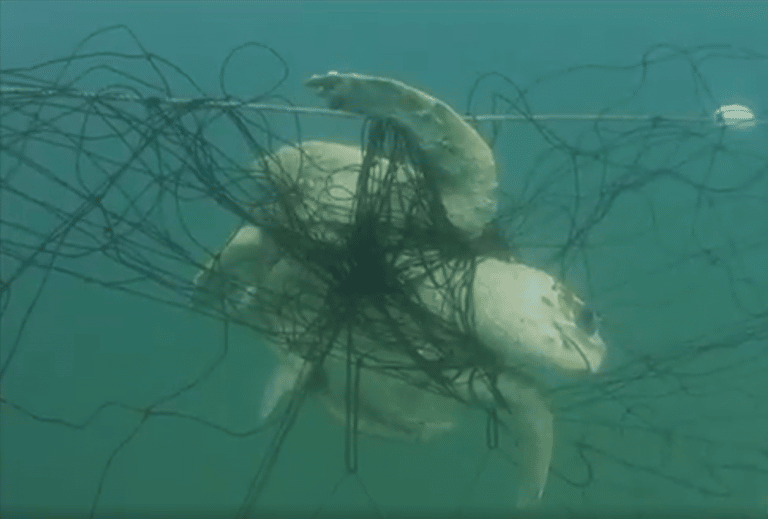SYDNEY 25 MAY 2025: The Queensland Crisafulli government’s ‘new’ Shark Control Program—that will amp up the slaughter of sharks—looks like it was written in the 1900’s and flies in the face of conservation science while doing nothing to improve swimmer safety. The news was revealed today in a Courier Mail...
Licence to kill: Why Australians would rather kill our native animals than live with them
One million, two-hundred thousand. That’s the number of native Australian animals licensed to be killed in 2023. Wombats, kangaroos, cockatoos, possums, wallabies, lorikeets, even black swans—1.2 million native Australian animals, all legally allowed to be killed under government-issued licences, in one year. One single year.
‘It was really quite depressing once our research started to uncover the enormous scale of shooting, trapping and poisoning that was happening across Australia,’ said Dr. Louise Boronyak, a wildlife campaigner with Humane Society International (HSI) Australia, and co-author of Licence to Kill, HSI’s new report that exposes this scale of killing for the first time. ‘As a person who loves animals it really affected me,’ she said.
To effectively campaign for animal welfare and conservation, HSI Australia needed to understand the scale of legally permitted killing of wildlife on private land. The compilation and analysis of licensed wildlife killing data from each state and territory had not been done before, and what HSI Australia uncovered was shocking.

The Licence to Kill Report: Our Findings
Officially, the number of native animals licensed to be killed for 2023 was 1,222,507, which is horrendous, but when you start adding the years together, and you find figures like 4.5 million between 2021–2023, the significance of what’s at stake over time becomes apparent.
‘The fact that so many native animals are allowed to be killed for private interests is what surprised me the most,’ said Meg Lamb, Animal Protection Campaigner for HSI Australia and co-author of the report.
“The killing of kangaroos and dingoes is well known, but, like many people who have seen the report, I was surprised by the types of animals that were targeted…possums, cockatoos, wombats, lorikeets, I mean, the list is quite broad.”
HSI Australia identified that the ease of getting a licence, along with the lack of knowledge-sharing, transparency and accountability, has led to a scale of killing that is out of control.
‘In each state and territory, the legislation will say something like “You can get a licence to kill a native animal if the animal is causing you a problem”,’ Lamb said. ‘Generally, a licence won’t be issued to kill threatened species, but if any other native animal is causing someone grief, then technically you can get permission to kill that animal.’
Boronyak agrees. ‘Any species that is not threatened with extinction is fair game,’ she said. ‘It depends on the jurisdiction, but most require minimal information about the impact or whether non-lethal ways to manage the situation have already been tried,’ she said.
‘Day to day most of us happily coexist with wildlife, we like to see wildlife around, and the sound of birdsong, for example, helps calm our nervous systems. However, when wildlife impinges on our livelihoods, or are a deemed a nuisance, then the default is killing. This widescale extermination from privately owned lands is causing wildlife to disappear across our landscapes leading to declining ecological health and resilience.’
The problems animals cause varies but usually come down to one reason: native animals naturally exist where humans do now. It leads to what is termed as human–wildlife conflict, a conflict where, as Boronyak states, the default solution is killing. But many, like HSI Australia, believe the solution should be coexistence.
Human–wildlife conflict, what is it and what is the solution?
‘When we talk about human–wildlife conflict it shows how we think as humans: that we’re separate from nature, and that everything should fit around us. So, when animals show up in our space or affect our resources, then it becomes a problem to solve,’ Lamb said.
‘Unfortunately, we’ve typically found that the solution is simply to kill native wildlife. But we’re all part of the same ecosystem, and what’s good for wildlife is good for us too. If we could look at it less as a fight and more as learning to live together, then we’d find ways to coexist that don’t pit us against nature.’
The ‘conflict’ mentality is evident in the inhumane ways the killing is done—mostly through shooting, trapping, or poisoning with the controversial 1080 poison.
‘We need to phase out of the cruellest methods of lethal control such as 1080 poisoning and trapping. These methods, along with mis-shot animals, cause extreme pain and suffering. We must find ways to do better,’ Boronyak said.
Why lethal control has become the default perhaps warrants its own report. But the influence of culture that normalises killing and government policy, funding and infrastructure to support the killing can’t be ignored.

What is preventing us from protecting our native wildlife?
‘Inertia is one barrier to change,’ Boronyak said. ‘Laws, policies and funding by government and industry have institutionalised lethal control even though we know it’s entirely possible to live and farm alongside wildlife.
‘Other barriers, such as a lack of government funding for alternative approaches, or to research and trial new humane methods, makes the default act of killing too easy. There is very little support to adopt non-lethal tools and it’s up to the landholders to do their own research and trial alternatives. It’s important to work alongside landholders to field-test and demonstrate how alternative methods can work, and which combinations work best. Governments must take on a greater role in creating a new paradigm that fosters coexistence over killing.’
Lamb links it to her previous concerns about our separation from nature and our traditional view of animals. ‘Sadly, I think it’s a colonial mindset that’s all about control. Again, I think it’s rooted in the idea that humans come first and anything that gets in our way is just a problem to get rid of. Animals, to most humans, have been something to use or something to eliminate and I think the killing continues because “that’s how it’s always been done”,’ she said.
‘We know that governments talk about a “living with wildlife” approach, but the numbers tell a different story. I appreciate that people, especially those living in rural and farming communities, face real challenges, but it’s time to put real solutions first because killing doesn’t work – many landholders kill the same ‘problem’ species year after year after year. Killing is clearly not the solution. We need laws and policies that make coexistence the priority, and we need government support to help landholders make the shift from killing to coexistence.’
To find out more about the licensed killing of Australia’s native wildlife and how you can help, please visit our dedicated page on ‘coexistence not killing’.



